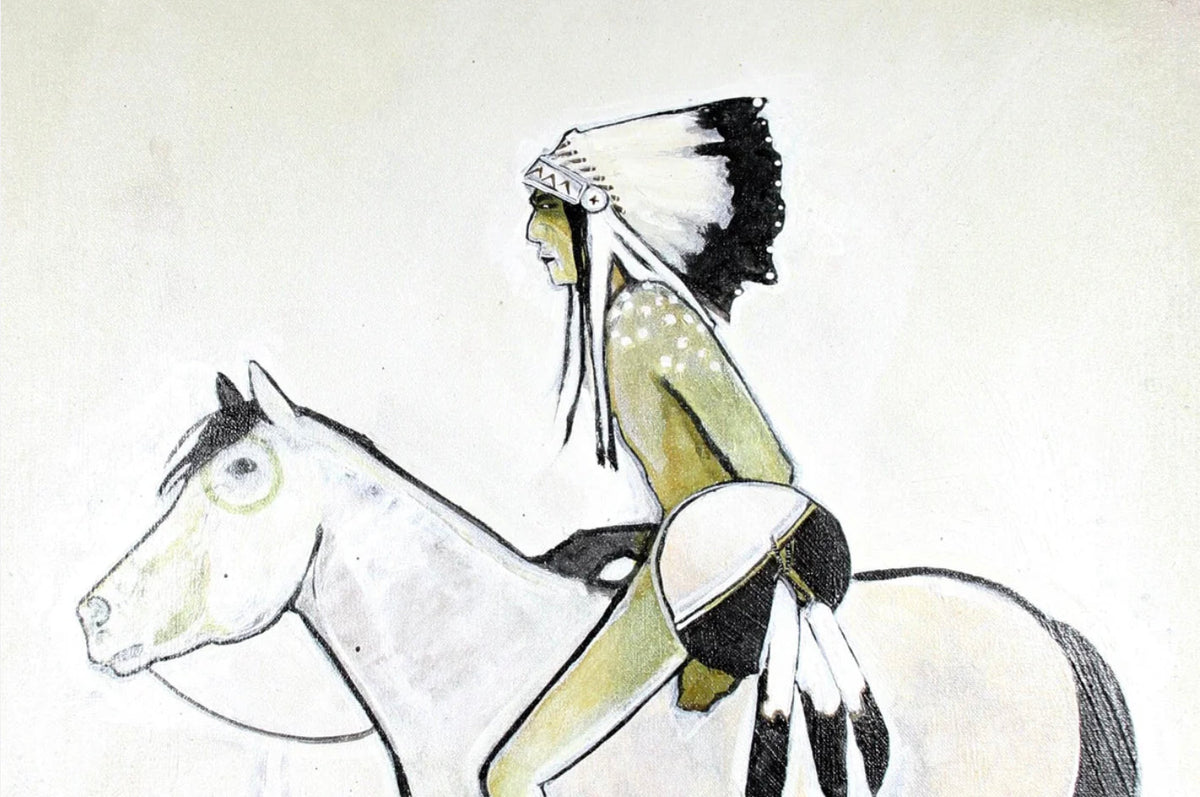
From a Study to a Finished Painting
|
Time to read 3 min
|
Time to read 3 min
We’ve all heard it said that practice makes perfect. This truth is visibly evident in the world of an artist. The more artists experiment, the more they explore, hone, and perfect their skills. How do you, the art lover, benefit from this? Most artists sketch or paint smaller studies that they later use to create the same or similar piece on a larger scale. Some artists make these studies available for acquisition. This lets you observe the artist’s process and share the excitement of discovery. It also opens the opportunity to add these to your collections, where both the study and the final painting can be displayed together. The smaller piece may be fully recognizable within the larger, or you may have to use your imagination to see how things developed.
Here are two Sorrel Sky artists who make their studies available for acquisition, Kevin Red Star and David Knowlton. Look for how each uses the study to consider composition, perspective, light, and shadow. The details might be blurred and the brush or pencil strokes might be softer … all in preparation for the final larger painting.
PURPOSE OF STUDIES
Studies allow an artist to explore specific elements of a planned larger piece. They can range from quick pencil sketches to more detailed oil paintings, depending on the artist's needs and preferences. Studies serve multiple purposes. Exploring Composition — Testing Color Schemes — Practicing Specific Techniques — Refining Details — Experimenting with Different Approaches
TYPES OF STUDIES
Artists employ various types of studies, each serving a specific purpose in the creative process. Thumbnail Sketches: These are small, quick drawings that focus on the overall composition of the planned work. They help artists experiment with different arrangements of elements without investing too much time in details. Value Studies: These black-and-white or grayscale sketches allow artists to explore the distribution of light and shadow in their composition, ensuring a strong tonal structure. Color Studies: Small-scale paintings or digital mockups are used to experiment with different color schemes and palettes before committing to the final piece. Detail Studies: Focused sketches or paintings of specific elements (e.g., hands, faces, or intricate objects) that require extra attention or practice. Plein Air Studies: Quick paintings done outdoors to capture the essence of a landscape or scene, which can later be referenced for a more detailed studio painting.
BENEFITS OF STUDIES
The benefits an artist receives from their studies are also varied. Refining Ideas: Studies allow artists to refine their initial concepts without the pressure of working on the final piece. They can experiment freely, make mistakes, and learn from them in a low-stakes environment. Problem-Solving: By working through compositional, color, or technical issues in smaller studies, artists can identify and resolve potential problems before they arise in the final work. Skill Development: Regular practice through studies helps artists improve their observational skills, technique, and understanding of their subject matter. Time and Resource Efficiency: While studies do require an initial investment of time, they ultimately save artists from making costly mistakes or major revisions in the final piece. Building Confidence: Successfully completing studies gives artists confidence in their vision and abilities, which can translate into a more assured approach to the final painting.
ROLE OF STUDIES IN DIFFERENT PAINTING STYLES
The use and importance of studies can vary depending on the painting style. Realism: Detailed studies are often crucial for achieving accurate representations of subjects. Impressionism: Quick, on-site studies help capture fleeting light and atmospheric conditions. Abstract Art: Studies may focus more on exploring color relationships and compositional balance. Conceptual Art: Studies might involve written notes or diagrams to develop the underlying concept.
STUDIES PRODUCE GREAT ART
These small, often unseen studies that precede a finished painting are a testament to the thoughtful, repetitive nature of the artistic process. Whether an artist makes them available for acquisition or not, we are reminded that great art is not just the product of talent and inspiration, but also of careful planning, problem-solving, and dedicated practice.
